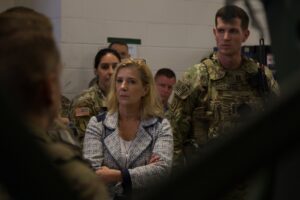
After recently installing a new leader and on the heels of the Army’s rollout of its doctrine for future multi-domain operations, Secretary Christine Wormuth said Monday she sees ‘plenty of work ahead’ for Futures Command beyond the its work helping develop the current portfolio of modernization systems. Wormuth’s remarks arrive as the Army is set to publish its new ‘Field Manual 3-0, Operations’ doctrine on Tuesday, which sets the path for how the service plans to modernize its capabilities and…

 By
By 











